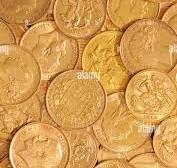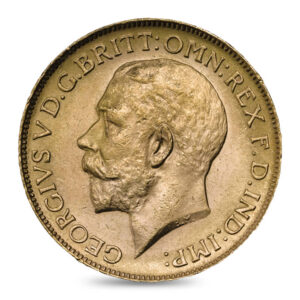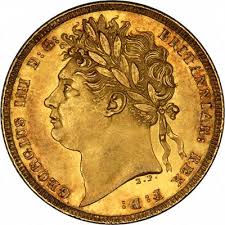The gold sovereign is famous for several reasons, primarily its enduring legacy as one of the most iconic and widely circulated gold coins in history. Here are some key factors that contribute to its fame:
1. Royal Origins:
-
The gold sovereign was originally introduced during the reign of Henry VII in 1489. However, the version that most people recognize today was reintroduced in 1817 under King George III. It has had a long association with British royalty, making it a symbol of the monarchy and the nation’s wealth.
2. Iconic Design:
-
The most famous design of the gold sovereign features St. George slaying the dragon, created by Benedetto Pistrucci in 1817. This design is widely regarded as one of the most beautiful and iconic images on any coin in history. St. George is a legendary figure representing the triumph of good over evil, and the design reflects British ideals of strength and heroism.
-
The reverse of the coin shows St. George on horseback, defeating a dragon with his spear. The image has become a symbol of British bravery and resilience.
3. Gold Standard:
-
The gold sovereign became an essential part of the gold standard system, which was the basis for many countries’ monetary systems in the 19th and early 20th centuries. For much of the 1800s, the British pound sterling was backed by the gold sovereign, giving the coin global importance in trade, commerce, and international finance.
4. Global Circulation:
-
The gold sovereign was not only used in the UK but also circulated widely in the British Empire, including in countries like India, Canada, and Australia. The coin was often used as a standard of trade and a store of value in these regions.
-
As the British Empire expanded, the sovereign became a symbol of British influence across the world.
5. Enduring Legacy:
-
Even after the gold standard was abandoned in the 20th century, the gold sovereign maintained its status as a highly respected and sought-after coin. It became a collector’s item and continues to be minted today, often in special editions for investors and numismatists.
-
It is still produced by the Royal Mint today, and the modern version of the coin has the same weight (7.98 grams) and gold content (22 carats) as the original, ensuring its continued legacy.
6. Symbol of Wealth and Stability:
-
The gold sovereign has always been associated with wealth, stability, and financial security. For centuries, it was a symbol of the power of the British monarchy and the stability of the British economy. Even in modern times, owning a gold sovereign is often seen as a secure investment in precious metals.
7. Cultural Significance:
-
The sovereign has appeared in various forms of art, literature, and popular culture. Its status as one of the world’s most famous coins has made it a symbol not just of Britain, but also of the rich history and traditions of coinage.
-
Because of its historical and cultural significance, it often appears in documentaries, exhibitions, and art collections dedicated to British history and numismatics.
In summary, the gold sovereign is famous for its iconic design, its historical importance as a symbol of the British Empire, its role in the global financial system, and its continued legacy as a precious and collectible coin. It’s a symbol of British heritage, wealth, and the enduring power of the monarchy.







